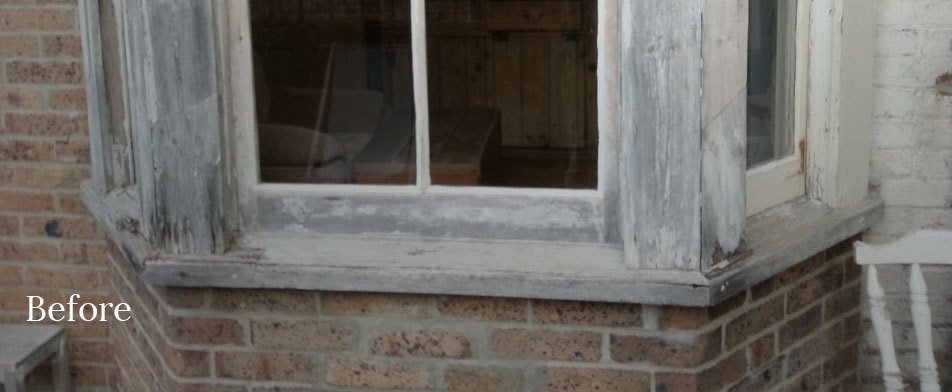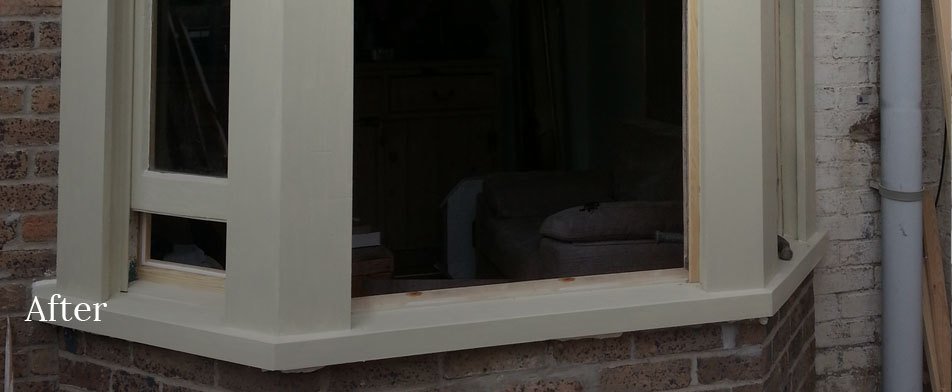Full Refurbishment
This involves The Original Sash Window Company’s comprehensive draught proofing and overhaul as above but whilst the window is apart the sashes and box frame are prepared, abraded and brought forward ready to take a top coat of your choosing inside and out. This way we can ensure that all parts of the window are sealed, meaning they will last longer!
The vastly experienced team at The Original Sash Window Company can undertake all works necessary to overhaul your sash windows and get them working beautifully. This may include but not limited to (subject to survey)
- New cill or cill sections
- New timber sections for the sashes or completely new sashes* • New outer boards
- Replacement glass
- New sash pulley wheels
- New ironmongery (fasteners, lifts etc.)
- Additional security/safety products
- Installation of energy efficient Heritage double glazed units**



How to maintain
Painting
Paintwork to the external faces of sash windows must be maintained in good condition to protect joinery and putty from the elements. Sash windows normally require external repainting every 3-5 years depending upon exposure. Redecorating sash windows in good time, before paintwork has begun to break down, will minimise preparation requirements.
The following general principles apply:
• prepare existing surfaces.
• apply treatment to knots and resinous patches and prime any bare wood.
• ensure each layer is applied onto a perfectly dry, clean and sound surface.
• ensure that the putty is completely covered and the glass to putty joint is sealed with paint, but avoid spreading the paint too far onto the glass surface and maintain a straight sight line.
In certain instances Local Authority planning controls may apply to your property covering acceptable paint colours for external joinery. A number of different paint systems are available – usually with different specifications for external and internal use. For external use an appropriate gloss paint or micro-porous paint specification is required. Manufacturers’ recommendations as to suitability and use of primers, ‘knotting’ treatments and the numbers of undercoats and finish coats required should be followed.
Preparation for painting
Surfaces must be prepared for repainting. Where existing paint is generally sound, all that may be required is gentle use of sandpaper to provide a key, followed by washing down with sugar soap or washing up liquid in water to remove dirt and grease. Loose and flaking defective paint should be removed using sandpaper and a thin bladed scraper, taking care not to damage the underlying timber.
Sash lifts and other fittings can be removed if required but the sash fastener should be left in place if it is in good condition, as later realignment is often difficult. When considering paint removal it should be borne in mind that the layers of paint surviving on sash window joinery are a record of the decorative history of the building, which would be entirely lost by stripping.
Where complete stripping of a listed building’s sash windows is unavoidable, it is suggested that a small area of paint on the internal and external faces of the top right hand corner of the top sash, together with a small area on the case is retained for record purposes. The edges of these patches can be sanded smooth prior to over painting so that they are not visible. A record of their location should be maintained.
Caution should be exercised when stripping paint to avoid damage to timber, glass, putty and surrounding masonry. Alternative methods of paint removal are as follows:
Chemical Paint Strippers
Use of aggressive caustic strippers by hand application or ‘dipping’ is not recommended. More suitable and less aggressive chemical paint removers for hand application (for example dichloromethane and methanol solvent based products) are readily available from trade and DIY retailers.
Mechanical Sanding and Scraping
Care should be exercised using scrapers and when sanding to avoid gouging timber surfaces and eroding moulding details.
Heat
Use of a gas fueled blowtorch is not recommended. Gentle heat from a hot air gun can be effective but glass must be protected by a shaped metal heat sink shield – and extreme care must be exercised as glass is liable to crack even under this gentle heat.
Heritage Double Glazing
This is a process that involves the machining of your existing sashes to enable the installation of much more energy efficient double glazed units. Cited by Grand Designs Kevin McCloud as a building product that “blew him away”, Heritage units can drastically reduce the ‘U’ value of your windows whilst maintaining the aesthetic value of your home. Heritage units are made up of 4mm glass, 4mm void, 4mm glass and incorporate ‘warm edge spacers’ that are made of foam instead of the usual aluminium which can thermally transmit the cold (hence condensation around the edge of the unit)**
**May require planning/conservation consent, depending on your location. Our experience surveyors can advise you on this.



